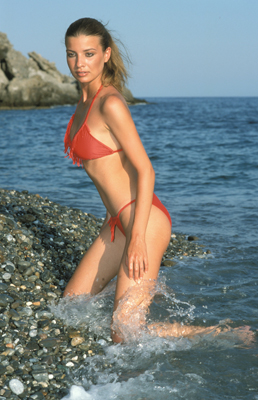 Sun and sand holidays raise the problems of a harsh environment and possible conflict of family interests. Sand and salt water constitute what is arguably the most damaging environment for expensive camera equipment. A few grains of sand ingested whilst changing lenses can do untold damage to the delicate internal mechanisms of an SLR. Store everything in zip-loc plastic bags and keep cameras and film out of direct sunlight and away from hot sand. Waterproof compact cameras are ideal for informal snaps but still need to be kept cool. Rubber seals must be kept scrupulously clean to prevent leakage. Combining photography with family activities on beach holidays can prove difficult. Equipment cannot be left unattended on a beach, those who go swimming return covered in salt water and sand, and care must be taken to avoid offending others by using a camera. Further afield, perhaps on the rock or cliffs, there are certainly good images to be found. However, your family may not see you for several hours at a time.
Sun and sand holidays raise the problems of a harsh environment and possible conflict of family interests. Sand and salt water constitute what is arguably the most damaging environment for expensive camera equipment. A few grains of sand ingested whilst changing lenses can do untold damage to the delicate internal mechanisms of an SLR. Store everything in zip-loc plastic bags and keep cameras and film out of direct sunlight and away from hot sand. Waterproof compact cameras are ideal for informal snaps but still need to be kept cool. Rubber seals must be kept scrupulously clean to prevent leakage. Combining photography with family activities on beach holidays can prove difficult. Equipment cannot be left unattended on a beach, those who go swimming return covered in salt water and sand, and care must be taken to avoid offending others by using a camera. Further afield, perhaps on the rock or cliffs, there are certainly good images to be found. However, your family may not see you for several hours at a time.
The sea is a constantly changing environment. Light, wind, tide and human activity are in constant flux. Opportunities are plentiful and include underwater work, coastal landscapes and seascapes, close-ups of waves, wildlife, sunsets and nightlife. Human interest can be found on the beach and both on and in the water, and may include water-sports and local fishing activities.
Shutter speeds of 1/250 or 1/500 are generally sufficient to freeze the motion of water. Slow speeds, such as 1 second, blur movement and give a softer appearance to the water. Under clear skies coastal light is intense. Contrast is high and may exceed the latitude of film or sensor, and shadows are dense. A polarizing filter reduces the glare caused by light reflected from the water, increases contrast and intensifies colours. Use a reflector or fill-in flash to reduce contrast when photographing people or nearby objects. Light reflected from sand may deceive a camera’s exposure meter and cause underexpose.






